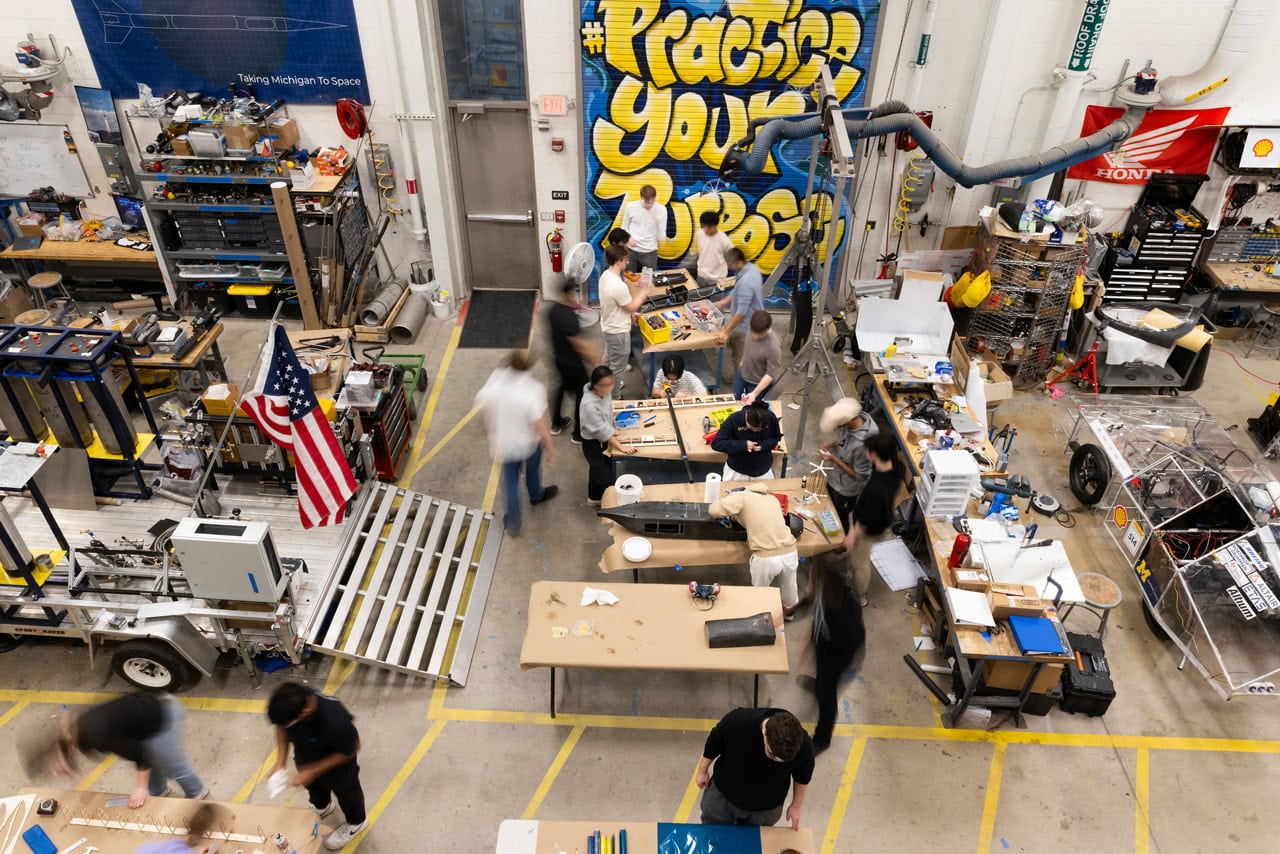
You can make it here
The Wilson Center celebrates 25 years of student-driven building, learning and growing.

The Wilson Center celebrates 25 years of student-driven building, learning and growing.
Growing up in California’s Bay Area, Simran Bagri didn’t know much about Michigan or U-M. She applied, but didn’t think much about it—until she learned about the Wilson Center.
Michigan Engineering’s nearly 25,000 square-foot makerspace for students, the Wilson Student Team Project Center is stocked with lathes, mills, 3D printers, computer-aided design equipment—everything students need to build solar-powered cars, rockets, off-road vehicles, submarines, Mars rovers, even a concrete canoe. The cavernous, concrete-floored space was one of the first of its kind among U.S. universities and is still among the largest. It’s open 24-7 and buzzes late into the night with the hum of machinery and the sound of students planning, laughing and debating.
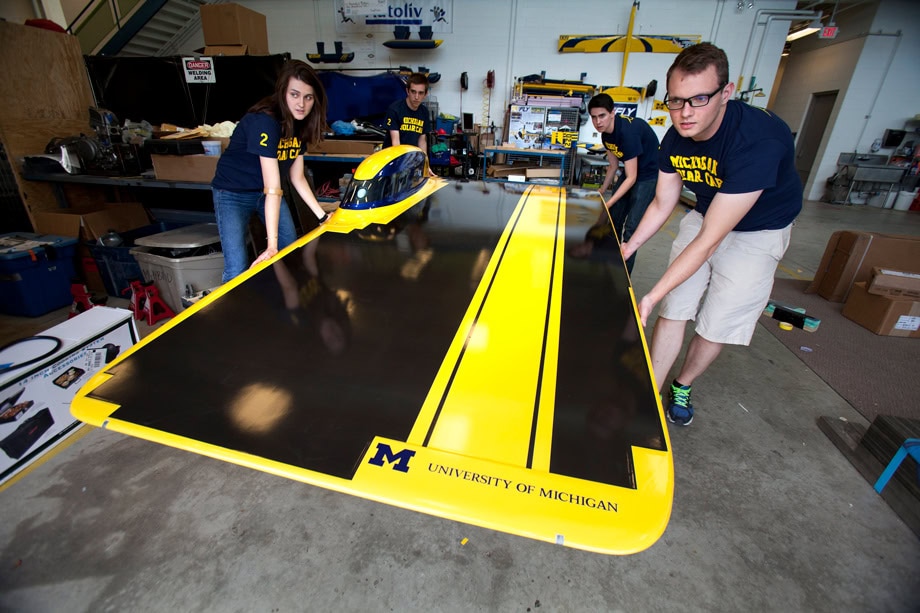
The more Bagri learned about Wilson, the more she was captivated by its 30-plus student teams—one of the biggest student team networks of any U.S. engineering college. She also liked that every one of them is run by students and open to anyone who wants to take part.
“I really liked how easy it was for students to get involved with anything that helps us apply what we learn in class to the real world,” she said. “There’s just so many opportunities available for students as long as we take the initiative to go out, seek it and take it. I really love that.”
The student-centric spirit is very much intentional. It goes back 25 years to when Wilson was founded as a place where students could build and learn without limits—pushing boundaries and doing great things, but also making the kinds of mistakes that would turn them into stronger engineers. Today, Wilson helps to underpin the Experiential Learning Framework that’s a core part of Michigan Engineering’s undergraduate education philosophy.
“Pretty much everything here happens because the students make it. And to me, that’s the secret sauce,” said Chris Gordon, Wilson’s director. “We give them that latitude as a matter of philosophy because that’s what student organizations here are about.”
Skylar: My favorite thing about this space is…
Abby: I’ve got to think about that for a second.
Skylar: There’s really unlimited creative freedom.
Kelly: You can just see something and think of ideas, to, like ways to use it.
Kenny: Getting to meet people who are, like, doing the same things as us.
Casseia: I guess I just love the passion that all the students have for the projects that they’re working on. That’s what attracted me to this place initially.
Abby: One of my favorite things about the Wilson Center is the fact that there are so many different project teams in this space together.
Samit: It’s a strong community within each project team, it’s a strong community between project teams.
Deborah: The students are really fully in charge of the project that they’re doing, and you have opportunities to to mess up and learn from your failure. And I think that that is really important.
Danny: I think it’s a brilliant place to actually apply real learnings from class, which are often really theoretical and put it to work, but also put it to work under a time crunch, under a budget crunch, and then take it globally to compete against universities from all over the world.
Samit: I think this place is kind of great. {Music fades in}
Skylar: The way that it’s changed me is…
Casseia: I guess the Wilson Center has changed me, because it’s made me a lot more willing to admit that I don’t know something. {Casseia Laughs}
Skylar: It’s definitely giving me more resilience.
Deborah: I think the Wilson Center has been a really important part of making me really believe that I can can try new things and be successful at them.
Casseia: Initially I was I was scared, I was really scared before I came here. And that’s like part of why it took me so long to get involved. But like once I did get here, I feel like asking questions and saying, I don’t know what that is, can you explain it to me? And became a lot easier. Kind of in all aspects of my life, to, not just here.
Skylar: Students here you will run into a lot of obstacles. {Skylar Laughs}
Skylar: Um, we’re all here figuring it out on our own. So you will fail. It’s a part of the process expect it, and I think it’s made me much more resilient for that.
Gillian: I have struggled a lot with confidence overall, kind of in my academic career.
Kelly: I would say confidence. I’m much more, both like, proud and not afraid to just come up with ideas. There’s a lot of fear around being the person that messes something up.
Gillian: Um… And I think for that reason, I also felt less inclined to experiment with like new materials, new tools.
Kelly: I think when you start out as engineering, you always encounter people that think their idea is better than yours. But I think being surrounded by so many engineers, all are supportive of, you know, getting this car to go on the road. Any idea, honestly, is really good for everyone to hear.
Gillian: Being a part of, of concrete canoe like for me in particular, Uh… made me less afraid to, to make mistakes and to experiment. I think that, that flexibility just gave me a lot more confidence personally. {Music fades in}
Sam: Um, so how would I prepare the space for the next 25 years?
Ben: I’d probably just make the space bigger.
Skylar: These teams are becoming more popular because people realize that there’s no better way to learn engineering than to, do it.
Carson: So if I could wave a magic wand and just make more happen, I would say exactly that. Just give the center the capacity, the funding, the space to just host more teams, because you’re going to see more and more people just come in, do some really cool, really crazy projects that just helps, you know, build the brand of the Wilson Center, showcase the talent that’s within our university. Um… And make our engineers, you know, the best that can be.
Danny: I think the Wilson Center is a hidden gem on campus.
Emerson: There’s so much fantastic learning that happens here.
Sam: The fact that this exists as a part of the university is the best kind of self-teaching ecosystem that I can possibly think of.
Gordon explains that Wilson Center teams differ from the student team networks at other engineering schools, which can be tied to class credit or have lengthy application processes. Most of Wilson’s staff is made up of students as well, who serve in paid positions overseeing the machinery and activity. In addition to making the center a more welcoming place, the student-led philosophy has driven innovation over the years, Gordon says, with students continually pushing the envelope of what’s possible. They’ve also built increasingly deep relationships with corporate sponsors, who provide expertise as well as dollars and often end up hiring student team members after they graduate.
“The ambition and complexity has grown so much,” he said. “The MASA rocket team is a great example. A few years ago, they were using off-the-shelf solid rocket motors. Then they decided they wanted to design and build their own liquid-fueled rockets, so they went and did it. Today they’re basically a mini-NASA. They’ve outgrown all the college competitions and are pretty much in a category of their own.”
The loose structure makes it possible for students to try out several teams before making a commitment. Bagri found that she gravitated to the Michigan Baja Racing team. Michigan Baja designs and builds an off-road racing car from scratch each year to compete in a series of Baja SAE International competitions around the country.
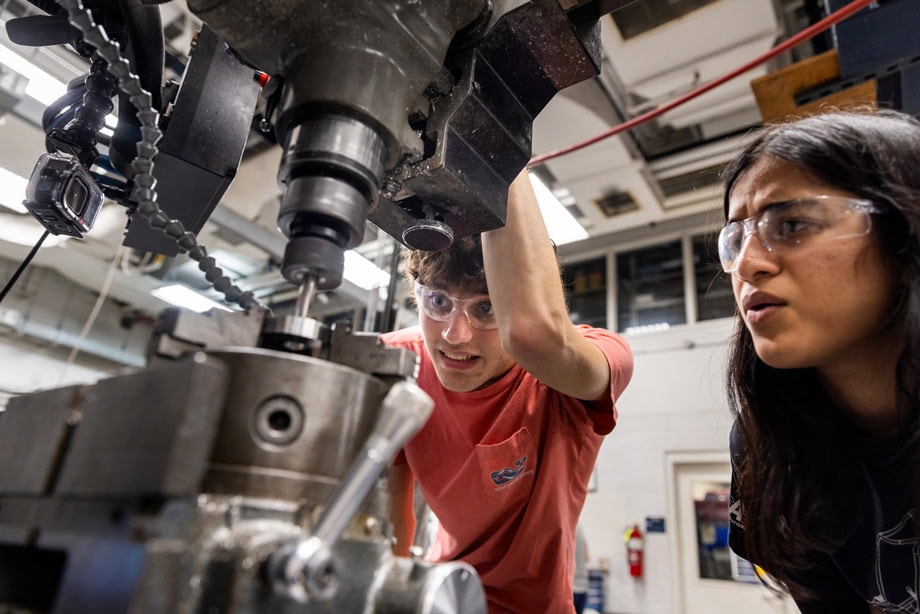
“I thought it was amazing that you could go from knowing absolutely nothing to being able to build a complete car,” she said. “I started off kind of just hopping around the different subsystems. I’d spend maybe a day or even just a few hours with suspension and then a little bit with gearbox. It’s a steep learning curve, but there are always people to help, and you end up actually learning some things faster than you would in class.”
The students who come back to Wilson teams year after year emphasize that, while competing and winning is fun, learning—and sometimes failing—is the real goal.
“If you have an idea, you can bring it to life,” said Derek Johnson (BSE ME ‘23), a mechanical engineering alum. “There’s not some expert over there saying, ‘that’s dumb, that’s not going to work’. Sometimes we end up wasting time, but at the end of the day, we learn from everything we do.”
During his time at U-M, Johnson was a member of the Michigan Supermileage Team, which builds electric and internal combustion vehicles designed to achieve astronomical fuel economy. Since graduating, he has parlayed his Wilson Center experience into a career as a design and test engineer for Toyota and Nissan.
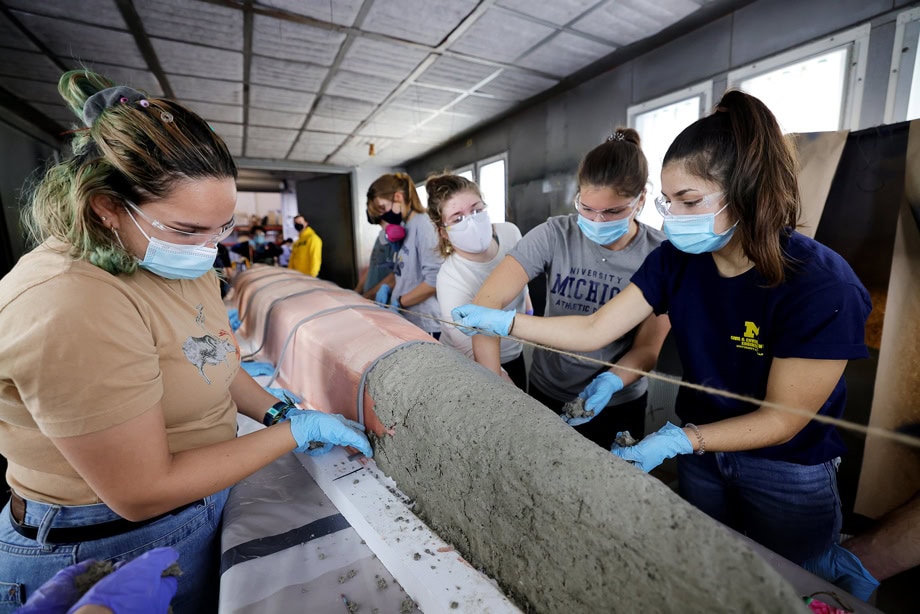
Wilson Center teams also teach so-called soft skills that can be just as important as engineering know-how. Aerospace engineering alum Danny Ellis (BSE Aero ‘10, MSE ‘13) was a member of a student team that built autonomous flying drones. He learned leadership and fundraising skills that he says helped him found the wind energy company SkySpecs. Its wind turbine inspection drones, manufactured in Ann Arbor, monitor the majority of wind turbines in North America and are deployed on every continent on Earth.
“At Wilson, I learned how to work with a group of people on a common idea and a common passion. I learned how to budget. I learned how to raise money from sponsors,” he said. “And I made lifelong friends.”
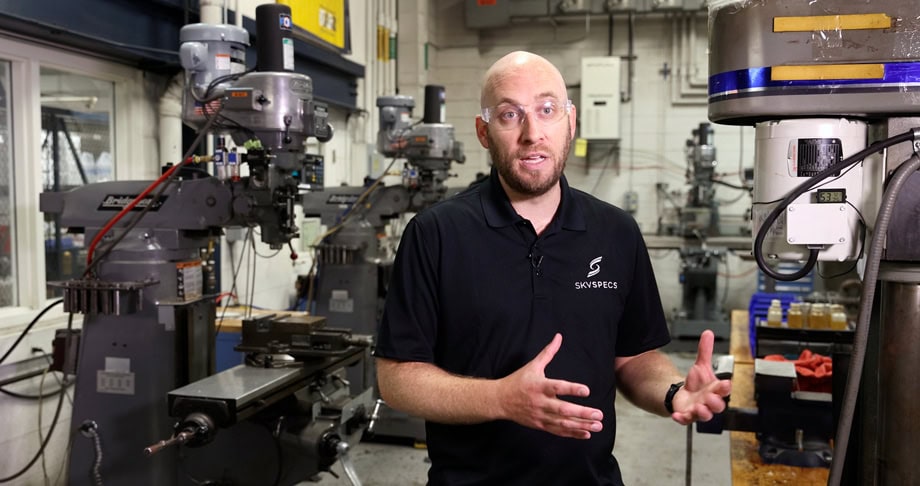
With so many teams, space inside the center can be at a premium. And Gordon has presided over steady expansion since he joined in 2011, a year after the center doubled in size to 20,000 square feet thanks to a gift from Vincent T. and Gloria M. Gorguze. The center’s original 10,000 square foot building opened in 1999, the result of a bequest from Walter E. Wilson (BSE ME ‘33), a U.S. Navy veteran who worked in the chemical industry.
Also managed by the Wilson Center is the 4,500 square-foot Robotics Makerspace in the Ford Motor Company Robotics Building, which opened in 2021. Gordon sees this expansion outside the core building as a key strategy to help meet the needs of not only the College of Engineering but the entire U-M campus.
“Wilson has kind of evolved into the front door that students come to when they need to make something—we work with the architecture school, the art school, the School of Music, Theater and Dance and many other entities across campus. And that benefits not only the students in those schools, but also engineering students who get exposure to other disciplines.”
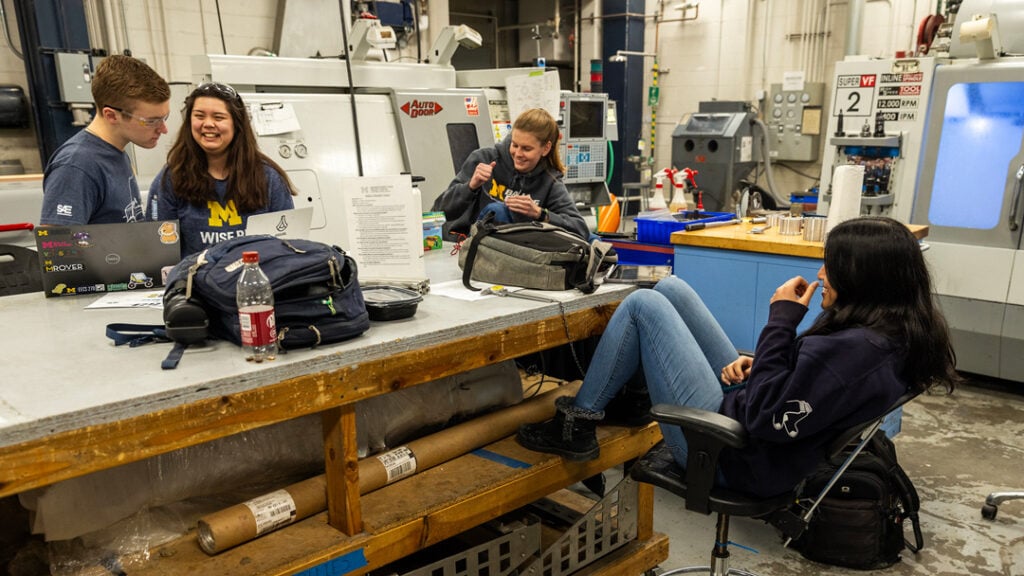
And just as Wilson’s influence extends beyond the College of Engineering, the students who spend time there find that the knowledge it imparts goes far beyond the physical processes of building a machine. One of those students is Casseia Watson, an electrical engineering junior.
“When I first came here, I was scared. Scared of not knowing, scared of being judged,” she said. “But the Wilson Center changed me. It has made me a lot more willing to ask questions, more willing to admit that I don’t know something and ask for help. And that has helped me in all aspects of my life.”
A member of the Michigan Electric Boat team, Watson is helping to build a speedboat with a planned top speed of up to 150 miles per hour. If the team is successful, they’ll shatter the world speed record for an electric boat, which currently stands at 121 miles per hour.
“I like to say, ‘Just show up.’ The community is amazing,’” she said. “Everybody talks to everybody. You make friends right away. Just go. And just start.”